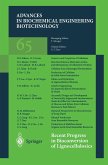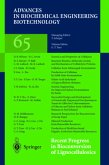Enzymes and whole cells are able to catalyze the most complex chemical processes under the most benign experimental and environmental conditions. In this way, enzymes and cells could be excellent catalysts for a much more sustainable chemical industry. However, enzymes and cells also have some limitations for nonbiological applications: fine chemistry, food chemistry, analysis, therapeutics, and so on. Enzymes and cells may be unstable, difficult to handle under nonconventional conditions, poorly selective toward synthetic substrates, and so forth. From this point of view, the transformation-from the laboratory to industry-of chemical processes catalyzed by enzymes and cells may be one of the most complex and exciting goals in biotechnology. For many industrial applications, enzymes and cells have to be immobilized, via very simple and cost-effective protocols, in order to be re-used over very long periods of time. From this point of view, immobilization, simplicity, and stabilization have to be strongly related concepts. Over the last 30 years, a number of protocols for the immobilization of cells and enzymes have been reported in scientific literature. However, only very few protocols are simple and useful enough to greatly improve the functional properties of enzymes and cells, activity, stability, selectivity, and related properties.
"Many well-known authors from research laboratories worldwide have contributed to this successful volume. . .this book provides a basic reference tool for all those who will need to immobilize biological materials in their work-not only for the beginner in the field, but also for experienced researchers."-Applied Biochemistry and Biotechnology
From Reviews of the First Edition...
"...enables researchers to rapidly enter the world of immobilization...an excellent reference work that will have long lasting value." -Quarterly Review of Biology
"...one of the most comprehensive collections of immobilization methodologies...[will] find extensive use as a methodology/reference text in any biotechnology-based laboratory." -Microbiology Today
"...a valuable tool for researchers in the many areas requiring enzyme and cell immobilizations." - Trends in Biotechnology
"...an ideal reference book to have around the laboratory." -Trends in Cell Biology
"...a worthwhile addition to any research library...especially useful for anyone involved in preparative isolations or needing immobilized reagents for specific research applications." -Doody's Health Sciences Book Review Journal
"...the coverage of the various techniques is excellent..." -The Analyst
From Reviews of the First Edition...
"...enables researchers to rapidly enter the world of immobilization...an excellent reference work that will have long lasting value." -Quarterly Review of Biology
"...one of the most comprehensive collections of immobilization methodologies...[will] find extensive use as a methodology/reference text in any biotechnology-based laboratory." -Microbiology Today
"...a valuable tool for researchers in the many areas requiring enzyme and cell immobilizations." - Trends in Biotechnology
"...an ideal reference book to have around the laboratory." -Trends in Cell Biology
"...a worthwhile addition to any research library...especially useful for anyone involved in preparative isolations or needing immobilized reagents for specific research applications." -Doody's Health Sciences Book Review Journal
"...the coverage of the various techniques is excellent..." -The Analyst








